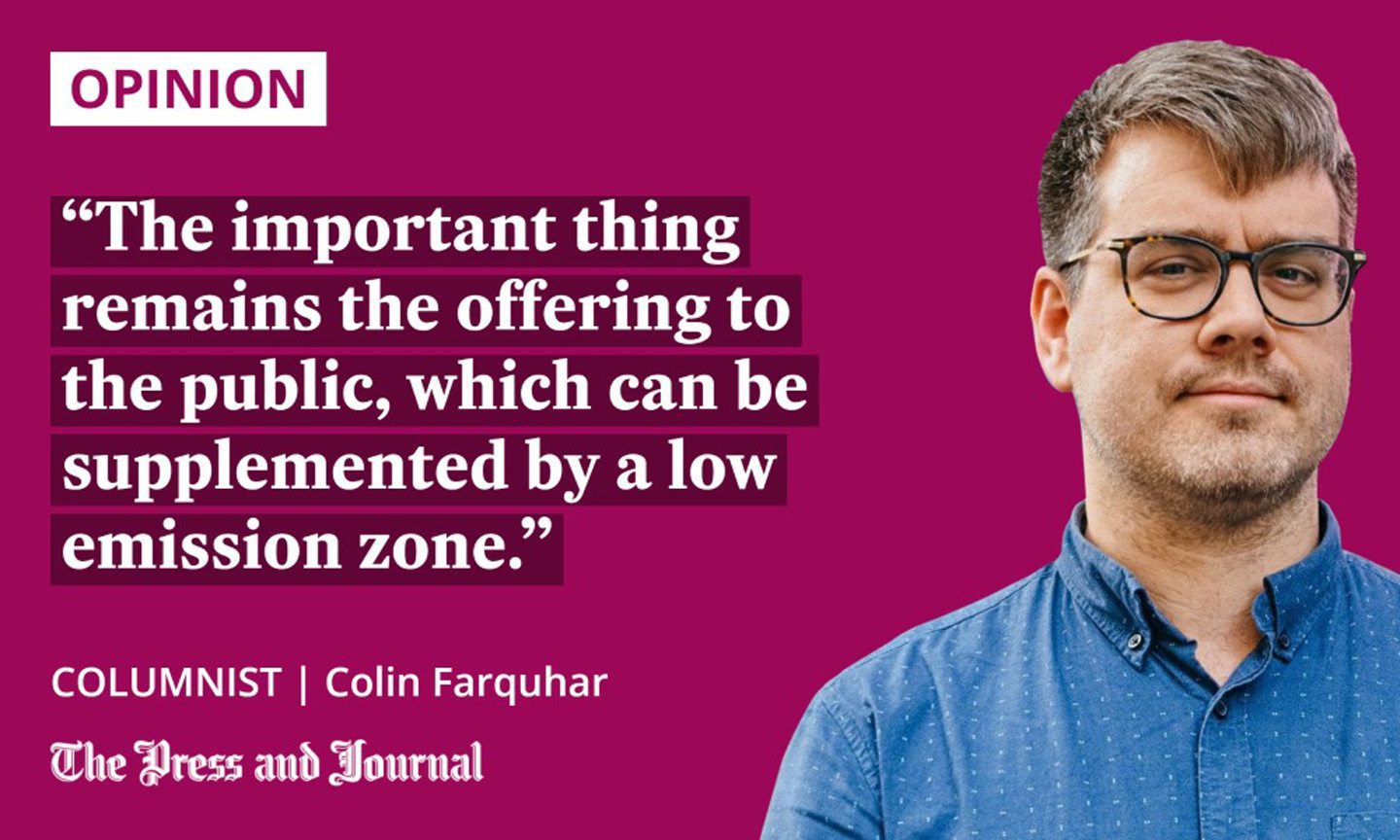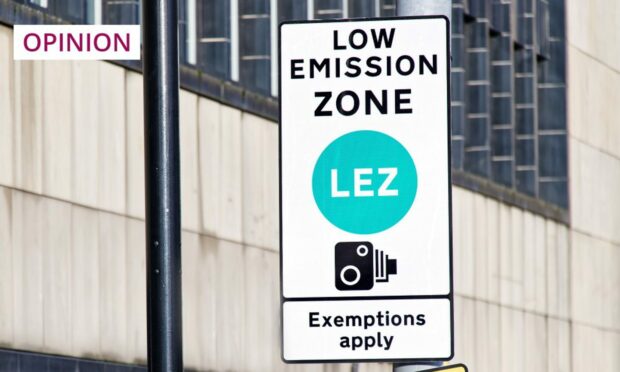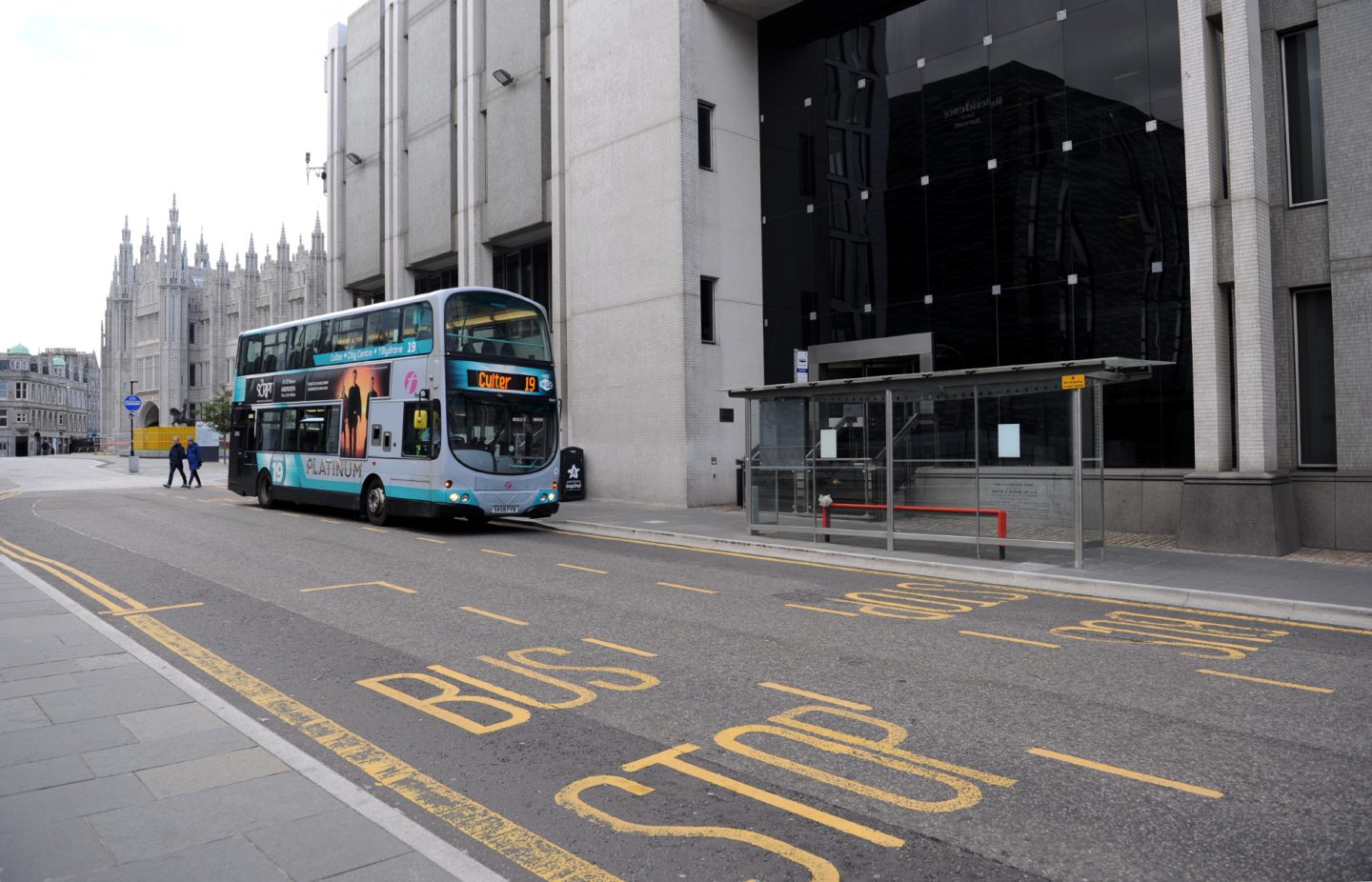Ulez, or, Udon’t, I guess.
Low emission zones have been thrust back into the national news this week, as political parties pick through the swings and roundabouts of their by-election performances. They’re either attempts to clear our city and town centres of pollution, or a savage assault on the freedoms of drivers, depending on your point of view.
Typically, I would subscribe to the positives of the scheme. However, I am not a driver yet, and sit my test in early August. To have more pedestrian freedom in the city centre seems a “no-brainer” to me, along with less noise, less harmful particles and, hopefully, more people. But, I realise it’s no small help that I’ve always either lived on good bus routes, or within walking distance of the city centre.
Others see barriers erected, corners cordoned off and access taken away, and fear a compounding effect on Aberdeen’s Union Street, which still sits slightly shabby. They’ll also feel the pinch in their pockets if they’re forced into upgrading to cars which they cannot currently afford.
Last week, in the constituency of Uxbridge and South Ruislip in Greater London – the former seat of one Boris Johnson – where one by-election took place, the Conservative Party held on by the very skin of its teeth. While routed in Selby and Somerton, the message quickly spread that it was the Ulez “wot won it” in Uxbridge, or more so the Conservative opposition to it.
This might be the case, although perhaps the issue was more one of affordability, due to a cost-of-living crisis, rather than inherent suspicion of green or environmental policies. Generally, people are for environmentally sensible politics. It’s when these policies are balanced against other necessities that things become murky.

Nevertheless, an ailing government has got on its blowers and shouted that environmental policies are for the Loony Left, with Uxbridge providing the evidence. There have been reports that Rishi Sunak is about to row further back on green pledges. Labour’s Keir Starmer appears to be following suit. I hope that the Labour leadership decides to remain steadfastly pro-green, and aren’t dragged into the mud on the issue.
Back in Aberdeen, our own LEZ is divisive, too, and may well become just as politicised as the London version when we approach the hard enforcement of it in June 2024. How do we avoid our own quagmire with it, so that progressive and beneficial change can happen, and the city centre is safer and cleaner for all?
‘I’m not against the LEZ, but…’
The implementation of the LEZ arrives on the back of numerous traffic enforcement changes in the city, and the reaction you may read on social media often begins: “I’m not against the LEZ, but…”
The buts can be around business deliveries or poor public transport options or the need to drive footfall into the city centre. Herein lies the balance. Public opinion must see the positives before the drawbacks will fly.
The LEZ and the attempts to allow fewer polluting vehicles around the city centre are, in my opinion, good things. The map of closures and checkpoints however, as it stands right now, is quite complicated. It is also not supported by attractive alternative transport options. I often take the bus, but many don’t and won’t. What might be made available to provide a better option for them?
And how do you make travelling to the city centre attractive to those who live within the convenience of the AWPR, which has become incredibly helpful in assisting people to avoid the city? Absolutely the point, but a consequence is that it’s now far easier to get around Aberdeenshire than to drive into Aberdeen.
The important thing remains the offering to the public, which can be supplemented by a low emission zone. The work to pedestrianise Union Street must be completed, rather than the half-hearted neither-one-nor-t’other that we have at the moment. Active travel routes should be created throughout the city, and long-term public transport options should be costed and considered, to give people a comfortable, car-free alternative.
Otherwise, low emission zones, car restrictions and the healthiness of our city centre economies will simply continue to be political footballs, with divisive consequences for wider environmental policy as we approach 2024’s general election. The wellbeing of our cities and society are too important to allow that to happen.
Colin Farquhar works as a creative spaces manager and film programmer in the north-east culture sector

